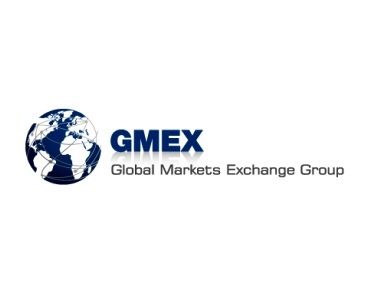Start-up exchange GMEX will launch its Constant Maturity Future for hedging and trading interest rate exposure on August 7, introducing the latest new derivatives product to target a shift towards centralised clearing.
The euro-denominated hybrid contract offers trading across the entire euro interest rate curve from two to 30 years and will be available for trading and clearing over the Eurex Exchange.
Hybrid swap futures, which combine the economics of an over-the-counter interest rate swap with the transparency of a listed future, reflect new regulations that require derivatives users to post initial margin covering five-day VaR on OTC swaps, compared with just two-day VaR for listed futures.
While there has been no mass swaps-to-futures migration yet, traction in similar US-based products is beginning to take off. The trend is expected to be mirrored in Europe, where the first wave of mandatory swaps clearing is expected to go live next year under the European Market Infrastructure Regulation.
“The regulatory reforms have spurred market demand for our CMF contract as it brings the benefits of futures trading closer to OTC products while delivering the efficiencies of centralised order execution, standardised central clearing and effective hedging of interest rate exposure,” said Hirander Misra, CEO and co-founder of GMEX Group.
Spoilt for choice
While Europe is still waiting for a regulatory mandate that will force over-the-counter swaps into central clearing and ultimately require the instruments to be traded over regulated platforms, there is no shortage of products that address a potential shift from OTC derivatives to listed alternatives.
Last week, the InterContinental Exchange launched euro- and sterling-denominated hybrid contracts based on Eris Exchange’s cash-settled swap futures methodology. The exchange also lists SwapNote contracts that it acquired as part of the purchase of NYSE Liffe.
GMEX’s CMF contract will sit alongside Eurex’s own version of the instrument. The Frankfurt-based exchange’s physically-settled euro swap futures began trading last September.
Early statistics suggest an uphill struggle. Eurex’s own hybrid futures have open interest of zero across the four maturities and there has been no rush for other European versions.
But GMEX’s attempt at melding swaps and futures into a single product has already caught the eye of many market participants. It has attracted investment from Deutsche Boerse and Societe Generale as well as price-streaming agreements with Tradition and Tullett Prebon for the underlying index.
The clearing partnership with Eurex enables the use of collateral and operational processes already in place for existing Eurex fixed-income derivatives such as Bund, Bobl and Schatz futures as well as the Frankfurt derivatives exchange’s own hybrid contract.
“Users will immediately benefit from the capital efficiencies we can offer as our interest rate product suite comprises both listed and OTC instruments covering the entire euro-denominated yield curve,” said Brendan Bradley, chief innovation officer and member of the Eurex executive board.
Gaining momentum
The CMF contracts have been more than two years in the making, during which time the firm has drummed up investment and support from a range of market participants. The instruments have been tested in Eurex’s trading and clearing simulation environment since April 2015.
“Launching a unique product is very much a process, not an event, with momentum continuing to build beyond the initial go-live date,” said Misra.
Both GMEX and Eurex anticipate a broad range of active participants from the start, with large buy-side and sell-side firms, futures trading houses and derivatives brokers already reporting interest ahead of launch.
“We’re delighted to be among the first to offer execution and clearing services for the GMEX CMF contracts at launch,” said David Mudie, CEO of RJ O’Brien Ltd, a UK-based affiliate of Chicago-based RJ O’Brien Associates, in a statement. “We’ve seen strong client demand for access to this product from day one.”
Support for the contracts has also been provided ahead of launch by Lyxor’s managed futures platform, Epsilon, and Old Mutual Global Investors.
More swap than future
As investors begin to dip their toes in the water and trial the broad range of alternative interest rate products already on offer, success is likely to come down to structure. Crucially, the CMF instruments centralise liquidity and enable trading across the curve, offering investors a granular delta hedge that is more akin to swap markets. They will trade with swap market quoting conventions in response to market feedback about early iterations of the swap futures concept which had shown that futures-style quoting and analytics were unfamiliar to some users.
CME’s deliverable swap future, for example has open interest of 84,000 contracts. But according to one global markets professional at a European house, buy-side firms typically struggle with the futures-like structure. He notes that buysiders tend to veer towards the Eris Exchange structure, which more closely resembles a swap. Open interest in Eris contracts is 174,000, of which more than 70,000 reflects the Flexes version of the product that attracts the same margin requirements as OTC swaps.
“Buy-side firms tend to find too much basis risk with contracts that are more futures-like in structure. The fact that they are willing to pay swap margin for a futures contract just goes to show that it isn’t only margin efficiency behind the futurisation trend. Many just want the transparency and liquidity of a listed product,” he said.
The CMF contract is calculated off a newly-created Interest Rate Swap Index Average. It tracks interest rate exposure at each point on the yield curve by removing the expiry date and marking the contract to market against the IRSIA Constant Maturity Index on a daily basis. The aim is to facilitate management of interest rate exposure without the need to readjust, and maintain liquidity across the entire curve.
